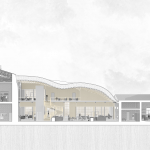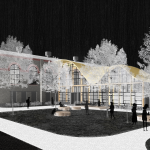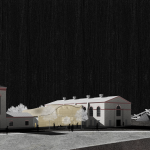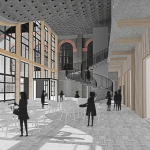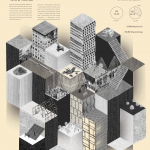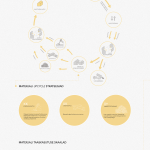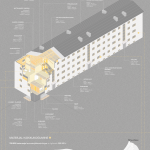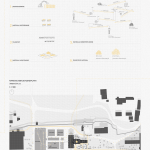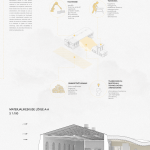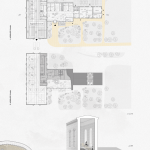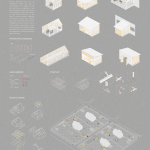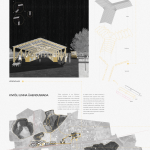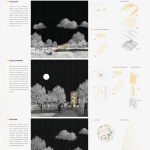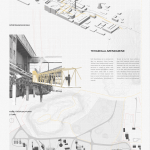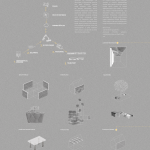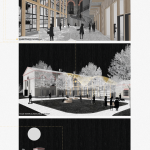Keiti Lige
- Faculty of Architecture
- Architecture and Urban Design
- ma
- REVALUATION. The impact of recycling demolition waste on space
- Tutor(s): Katrin Koov, Kadri Klementi
The aim of this Master’s thesis is the revaluation of space and materials. Valuing construction waste through reuse and recycling from one point and valuing urban space and industrial area more widely as a part of the process from the other point. The low real estate value and environmental problems are strongly associated with social problems and also with designing quality space.
While the landfill is filled with material, we dig out new raw material at the same time. I see potential in using waste as a new resource. In order for it to work it’s necessary to make changes in the system – to switch over from linear economy to circular economy. To rethink construction cost structure and the value chain. Additionally, focusing on collaboration and sharing information. Circular economy assumes that materials won’t leave the system at the end of the life cycle, instead they will find new purpose while changing the user, function or form.
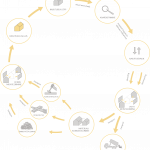
The focal subject of this Master’s thesis is to increase the value of the material, using the upcycling method. The three strategies of upcycling are – reuse, rethink and renew. Reusing is the most energy efficient, the use of the material stays the same.
Rethink means that materials functions can be changed and in the renew strategy, the material gets a new form as well as a new function. The design is playing a big role in increasing the value. It is possible to shape attitude and encourage for change through design.
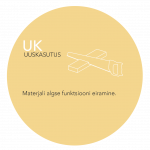
I observed the main vacant hruštšovka-type apartment buildings. Hruštšovka mainly consists of sand-lime brick and concrete panels. When considering the small salvage value and big amount of material, then renewing the material is the most useful.
The materials with the highest value – like glass, wooden frames, the wood construction of the ceilings, doors, metal and cast iron radiators are possible to rethink.
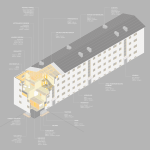
The different material upcycling strategies are reflected in three different scales in this project – the construction of building, public space and private space.
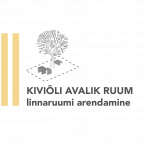
The idea is to gather all the construction waste from Ida-Virumaa and direct it to the Material Center from where it will be sent back to the material cycle. The center is located at Kiviõli’s chemical industry empty buildings. It mainly consists of four different functions: recycling, factory, learning center and workshop.
New technologies are used in the Material Center to produce unique construction elements. Additionally the factory is able to regulate and optimise work labor and produce according to the demand. The Material Center is the first step to change the image of Kiviõli and moving towards sustainable production.
I’m proposing to connect different attraction points to activate the city of Kiviõli, for example connecting the Adventure center, the factory area and city centre though the hiking trail. The development and opening of the Kiviõli factory area offers opportunities for educational and entertaining activities. One part of the hiking trail is the test road which begins from the Factory area and leads to Kiviõli’s city center.
On the test track it is possible to familiarise with public spaces and the recycled materials which are being used in their design. High quality public space gathers the locals and guests. This helps to develop and increase business in the city. The aim is to enthuse people to create the sense of community, and to strengthen and sustain the sense of space and develop civic pride.
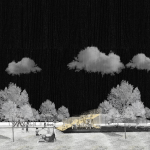
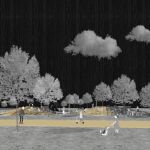
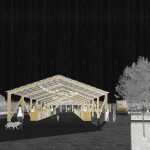
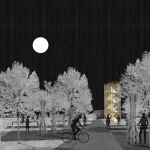
The same way of thinking should transfer from the public space to the private space. To rediscover the tradition of self-building, I suggest different recycling techniques while constructing the auxiliary buildings of the private houses.
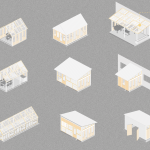
It’s about creating and developing a bigger circular system. The upcycling and production should spread across Estonia as a network and to the neighbour countries from there on.
The potential evolvement of Kiviõli shows how to strengthen the identity of decreasing small towns. It’s possible to use similar approach in other locations. I believe that everything has it’s own value, which has to be found.

